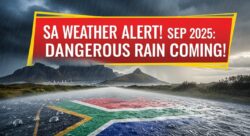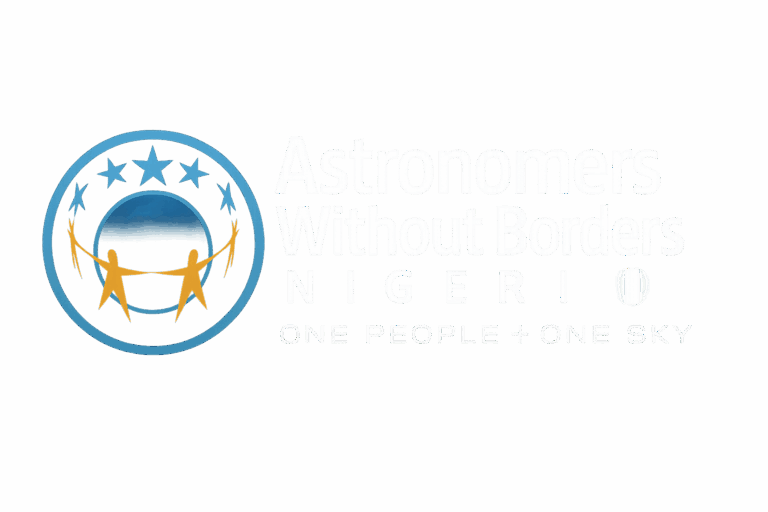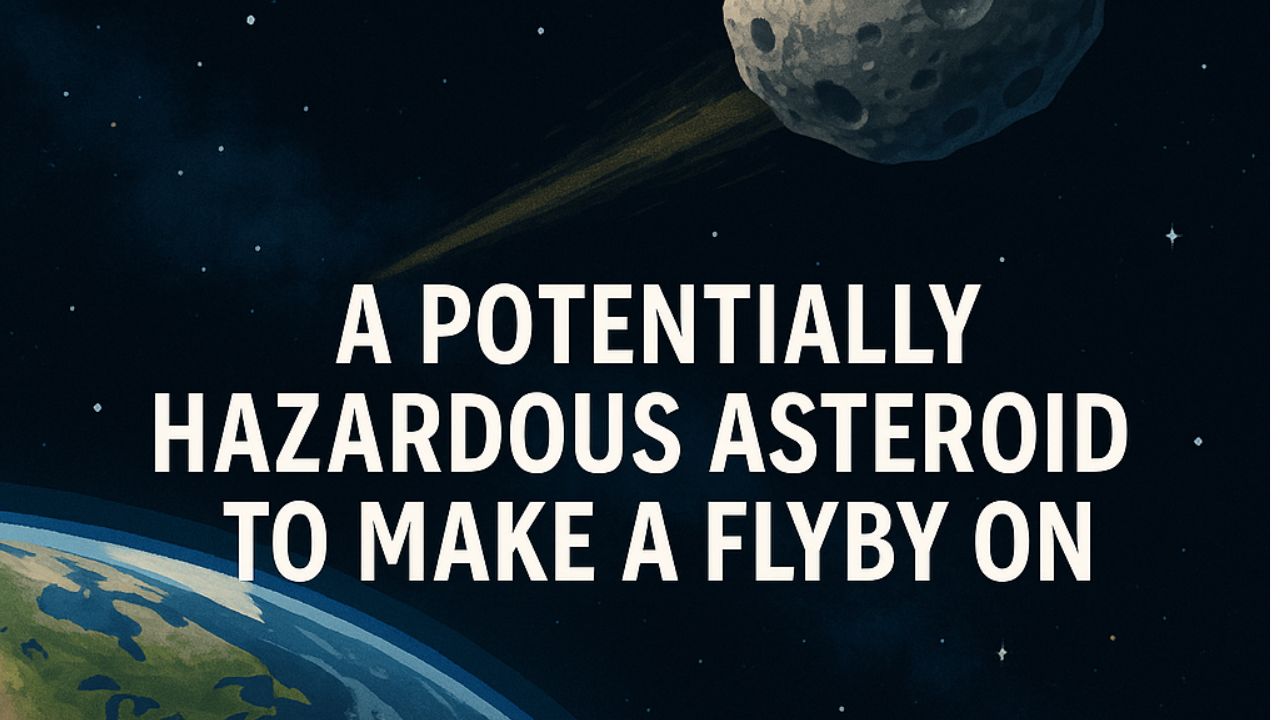Skywatchers around the world—including right here in Nigeria—will have a rare opportunity to witness a close cosmic encounter: a Potentially Hazardous Asteroid (PHA) is scheduled to safely fly past Earth. Though the term “hazardous” might spark alarm, astronomers assure the public that this asteroid poses no danger and offers a valuable educational opportunity instead.
Astronomers Without Borders Nigeria (AWB Nigeria) is leveraging the event to educate students, communities, and media outlets about near-Earth objects (NEOs), planetary defense, and space science awareness.
What Is a Potentially Hazardous Asteroid?
A “Potentially Hazardous Asteroid” is a Near-Earth Object (NEO) classified by NASA based on two main factors:
 South Africa Weekend Weather September 2025 – Provinces Alerted of Dangerous Rain Conditions
South Africa Weekend Weather September 2025 – Provinces Alerted of Dangerous Rain Conditions
- Its minimum orbit intersection distance with Earth is less than 7.5 million kilometers.
- Its diameter is greater than 140 meters—large enough to cause significant impact if a collision were ever to occur.
This does not mean the asteroid will strike Earth. It simply means its orbit brings it within a cosmic neighborhood close enough for astronomers to monitor.
Details of the 202X Flyby
According to NASA’s Jet Propulsion Laboratory (JPL), the asteroid:
- Has been designated [e.g., 2001 FO32]
- Measures approximately [e.g., 500 meters] in diameter.
- Will fly past Earth at a safe distance of [e.g., 2 million km], or over 5 times the distance from Earth to the Moon.
- Will travel at an estimated speed of [e.g., 124,000 kph], making it one of the fastest space rocks to pass Earth in recent years.
The asteroid will not be visible to the naked eye, but amateur astronomers with medium-sized telescopes may spot it moving across the stars.
AWB Nigeria’s Awareness Campaign
To harness the public’s interest, AWB Nigeria will host:
- An Online Info Session explaining what PHAs are and how they’re tracked.
- Observation Challenge for students to map its trajectory using open-source orbital data.
- Live Q&A Webinar with space science experts discussing planetary defense, space mining potential, and asteroid missions like NASA’s DART or Japan’s Hayabusa.
Educational Value
This event is being positioned as a prime opportunity to:
- Debunk myths about asteroid collisions and “doomsday” theories.
- Explain the difference between asteroids, meteoroids, and comets.
- Introduce topics like space debris, impact craters, and Earth’s geological history of asteroid impacts (e.g., the Chicxulub crater).
AWB Nigeria will distribute custom-made learning kits to participating schools, including:
- Printable orbital charts
- Asteroid fact sheets
- Short video explainers in English and Hausa
Quote from AWB Nigeria’s Coordinator
“When people hear ‘hazardous,’ they panic. But this flyby is a reminder of how far space science has come. We can track objects hundreds of millions of kilometers away and predict their paths with precision. That’s the real story here—science at work for the safety of our planet.”
The Global Context
There are currently over 30,000 NEOs being tracked by space agencies globally. Thanks to infrared telescopes, radar imaging, and international collaboration, space agencies like NASA, ESA, and JAXA can track the movement of large asteroids decades in advance.
Missions like OSIRIS-REx, DART, and NEO Surveyor are part of a growing planetary defense strategy to prepare for any future risks—however unlikely.
What Nigerians Can Do?
AWB Nigeria encourages local astronomy clubs, science teachers, and curious families to:
- Join the live sessions and follow the flyby online.
- Track asteroids using free platforms like NASA’s Eyes on Asteroids.
- Include planetary defense in science fairs, debates, and club projects.
The asteroid flyby is a cosmic visitor—not a threat. It reminds us of Earth’s place in the solar system and how much we still have to explore and understand. For Nigeria’s next generation of scientists, engineers, and astronomers, this is more than a headline—it’s a spark of curiosity.
So look up, stay informed, and be part of the conversation—because space science belongs to all of us.
One Sky. One Planet. One Future.





